Palomar student Steffanie Yeung shares her experience on dealing with the fear of being a victim of xenophobia on campus.
Story by Marisa Pak.
Asians have been getting lots of hate in the U.S. ever since the COVID-19 pandemic arose two years ago, which shut down nearly every business and school in the country and almost around the world. Steffanie Yeung is an Asian American who attended Palomar College during the pandemic and experienced fear and hostility while entering campus because some people thought COVID-19 came from China.
Yeung had many interests, including music where she learned to play the piano and violin young child. Her friends liked to describe her as down to earth who is very giving and helpful whenever you are in need. Yeung has Taiwanese, Chinese, and Japanese heritage. She embraces her culture and appreciates the many wonders of being 3 different Asian cultures. What made Steffanie afraid of embracing her culture?
Steffanie attended Palomar in person for classes in early 2021 that required hands-on learning. You can imagine the fear she had going on campus knowing people began bashing on Asians for spreading it or bringing it to America.
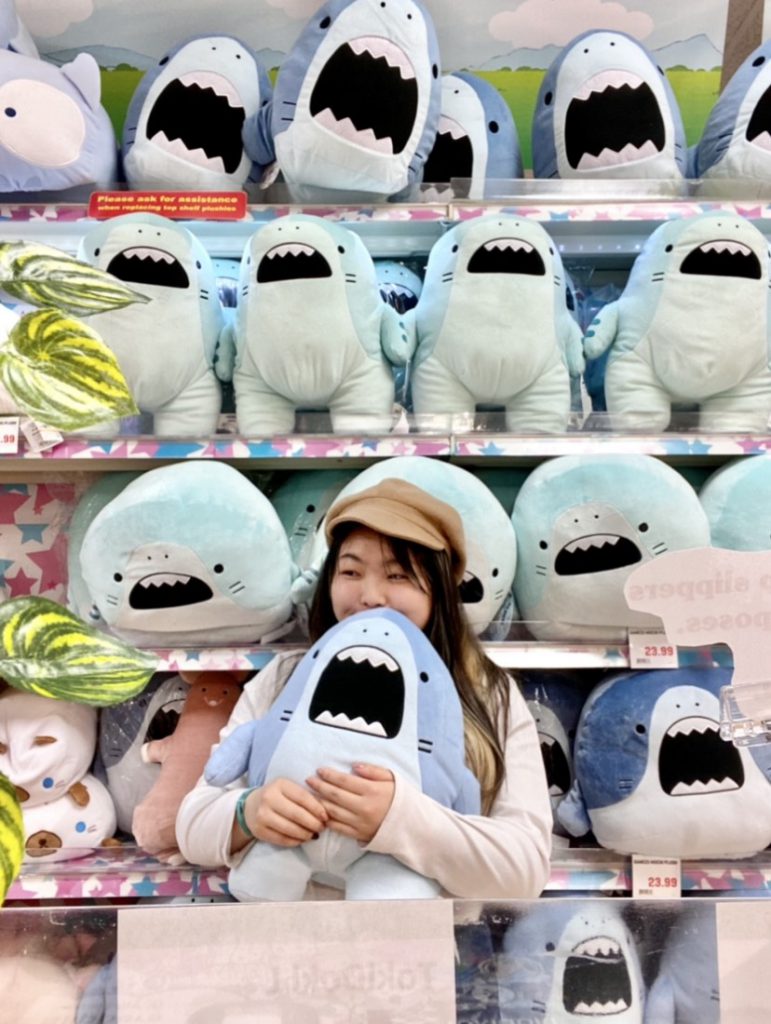
“I noticed was Asians got so much hate around COVID, but as a year went by, people started praising Asian fashion, their makeup.” ~ Steffanie Yeung (Photo courtesy of Steffanie Yeung.)
“I was a bit worried going back in person because I saw through social media that many Asians were becoming victims of being beaten in public for ‘causing’ COVID and bringing it to America”, she said with an agonized look on her face. “Many people online too were being racist and being xenophobic throughout this entire pandemic so it worried me having to attend classes knowing how much my race was being hated on for something we did not do or cause while being here in America.”
Yeung not only had to fear for herself, but also for her family because news coverage had reported many Asian businesses being destroyed or tormented due to the blame. Her family shops in these small businesses and attending it seemed like they had to risk their life to go there because of the worry that people were planning to beat them just for being Asian.
In the article, “Fighting Pandemic – and Asian Hate,” Ken Jeong discusses how many Asian hate crimes have increased by almost “150 percent” because of the xenophobia occurring along with the “weaponizing terms like ‘kung flu’ and ‘China virus’,” which egged on the increased hate on Asians during the pandemic.
Xenophobia was occurring throughout the country where Asians had to fear for their life on going out in public and worrying that others were going to go so far as to threaten or beat them. In simple terms, xenophobia is the fear and the hatred toward strangers or foreigners that people seem to find strange or foreign. Social media was just as bad where many people can comment more racial slurs to Asians and not have to be afraid because everybody is behind a screen.
Yeung had seen racism directed towards Asians all over social media, where TikTok was more apparent about it because of how much popularity the app was gaining since 2019. Many people were documenting COVID and their own experiences on the app.
- A multi-talented musician, Steffanie Yeung learned to play the piano at age 6 and the violin at age 8. (Photos courtesy of Steffanie Yeung.)
- (Photos courtesy of Steffanie Yeung.)
Unfortunately, any Asian influencers, who posted on social media especially the popular and growing app named TikTok was where most xenophobia is experienced. These Asian influencers experienced immense hate just for being Asian, where comments were blaming the person for causing COVID and saying racial comments about their looks. Many people commented on their entire culture on what they eat because of how different it was to American food.
In the article, “Stop the coronavirus stigma now”, the Nature Research Journal discusses how politicians who continuously blame China for the pandemic are at fault because “pandemics lead to communities being stigmatized, which is why we all need to exercise more care.” If we continue to increase the stigma by associating the pandemic with certain groups of people then it will not end anytime soon because in the end, the virus affects everybody which means everyone is at risk no matter if someone were to start it.
“I didn’t understand why people were blaming all Asians for the cause of COVID, it really made me start losing hope in society because of how uneducated people were during this pandemic”, she said with a brooding facial expression trying to make out her thoughts from how she felt a year ago. “I had to fear for myself online and in-person, but something I noticed was Asians got so much hate around COVID, but as a year went by, people started praising Asian fashion, their makeup.”
Yeung was correct in the sudden change of hate to love for Asians. Many people had hopped on the bandwagon on social media where Asians were the cause of a whole pandemic, but then soon forgot about it once the situation of the pandemic simmered down. People then began accustoming their life to online and following different trends that most originated from Asia.
One common trend is fashion. Yeung followed Japanese fashion for a long time, especially their streetwear and how popular “harajuku” was in Japan. People began becoming aware of this and posting it on TikTok where people began praising Asians for how they dress and comparing it to Americans where many did not know how to dress or do fashion. This is the sort of praise Asians were getting nearly a year before COVID.
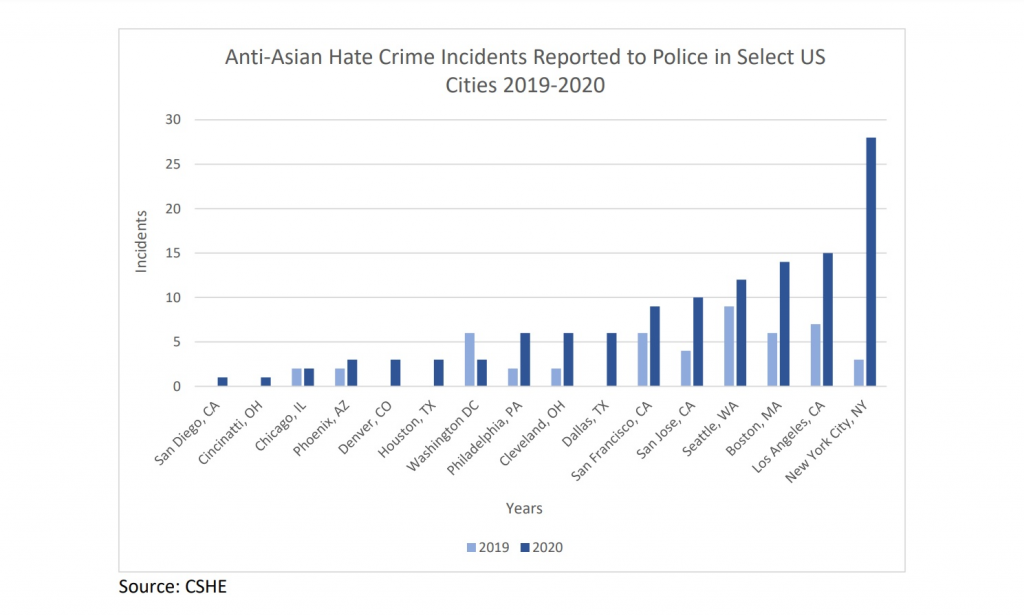
Anti-Asian hate crime spiked during the early years of the COVID-19 pandemic in many major U.S. cities. (Image courtesy of CSHE.)
Yeung was surprised to see so many people loving the streetwear Asians were wearing. “Because a year ago we were getting the most hate around the entire world but now we’re getting so much love on social media”, she said, “it kinda bothers me the way people switch up like that and the way people forget the hate we got and the abuse we had to endure when we were not the cause of this pandemic.”
In the article, “Kung Flu and Roof Koreans: Asian/Americans as the Hated Other and Proxies of Hating in the White Imaginary,” Julia R. DeCook and Mi Hyun Yoon commented on how xenophobia is occurring for all Asians not just Chinese people, many of the Asians who are being viewed by the white supremacists are “any type of Asian” is to blame. Non-Chinese civilians are the ones being “reported being the victims of hate crimes or microaggressions” which demonstrates that Asian hate is happening to anybody who is clearly Asian no matter which kind they are.
Palomar was strict on who could go on campus and only certain classes were allowed if hands-on learning was needed. Yeung resumed her in-person classes, however, she is hesitant of entering the campus. Having fear going out in public felt wrong for Yeung because she thought it was unfair for her to be ashamed of being Asian just because of a virus that originated in Asia and spread over to America. Yeung had mixed feelings and thoughts on if she were to experience racism herself because it was hard to believe something that horrible could happen in your own hometown.
“I usually kept to myself because I am pretty shy when it comes to socializing so I knew I wouldn’t really talk to my peers since I came to learn”, she said. “However, at the same time I felt like a lot of eyes were on me because many people had their own opinions on Asians and then spreading it so I felt like I had to keep an eye out for myself to see if I was being judged.”
In a story on Reason.com, “Do We Really Need New Anti-Asian Hate Crime Laws?” Elizabeth Nolan Brown pointed out in that young Asian Americans had to worry about their family being attacked due to “a number of crimes against elderly Asian people in California were similarly pegged by the press.” Even if it was not racially motivated, it is still a leading factor due to the pandemic.
Yeung has graduated and has experienced what it was like being Asian American and attending school. She felt the experience was surreal but she would not forget seeing the hate shift to love as people began to forget how detrimental COVID is since the vaccine was available and people were going back to “normal.”
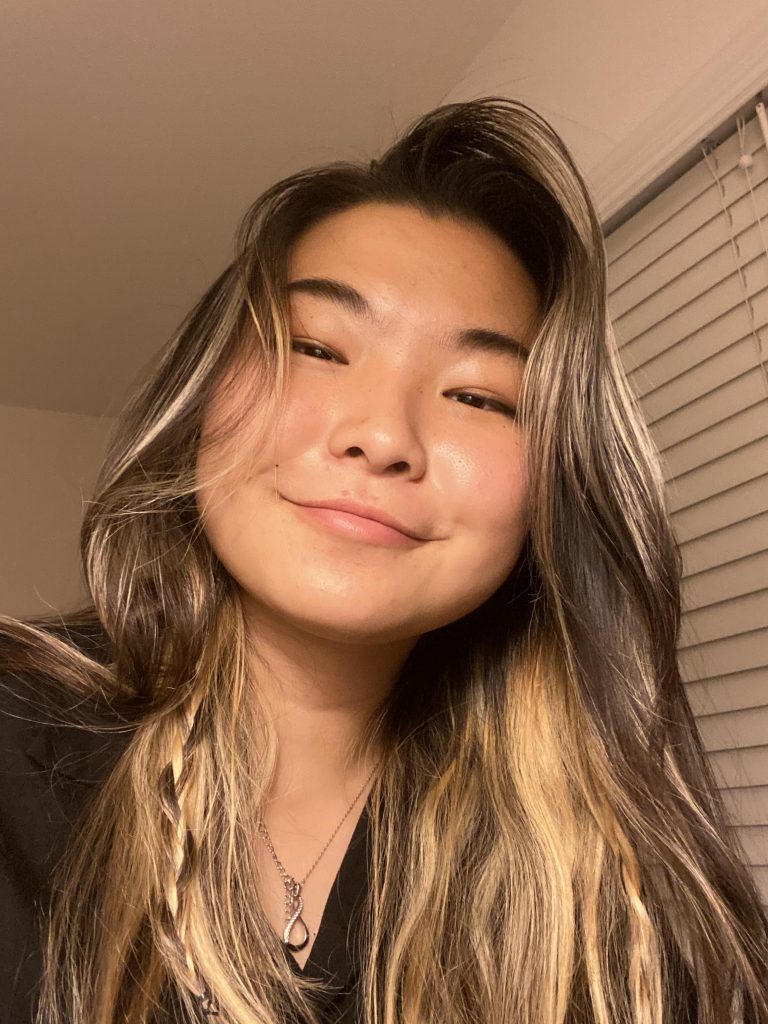
“I usually kept to myself because I am pretty shy when it comes to socializing so I knew I wouldn’t really talk to my peers since I came to learn. However, at the same time I felt like a lot of eyes were on me because many people had their own opinions on Asians and then spreading it so I felt like I had to keep an eye out for myself to see if I was being judged.” ~ Steffanie Yeung. (Photo courtesy of Steffanie Yeung.)

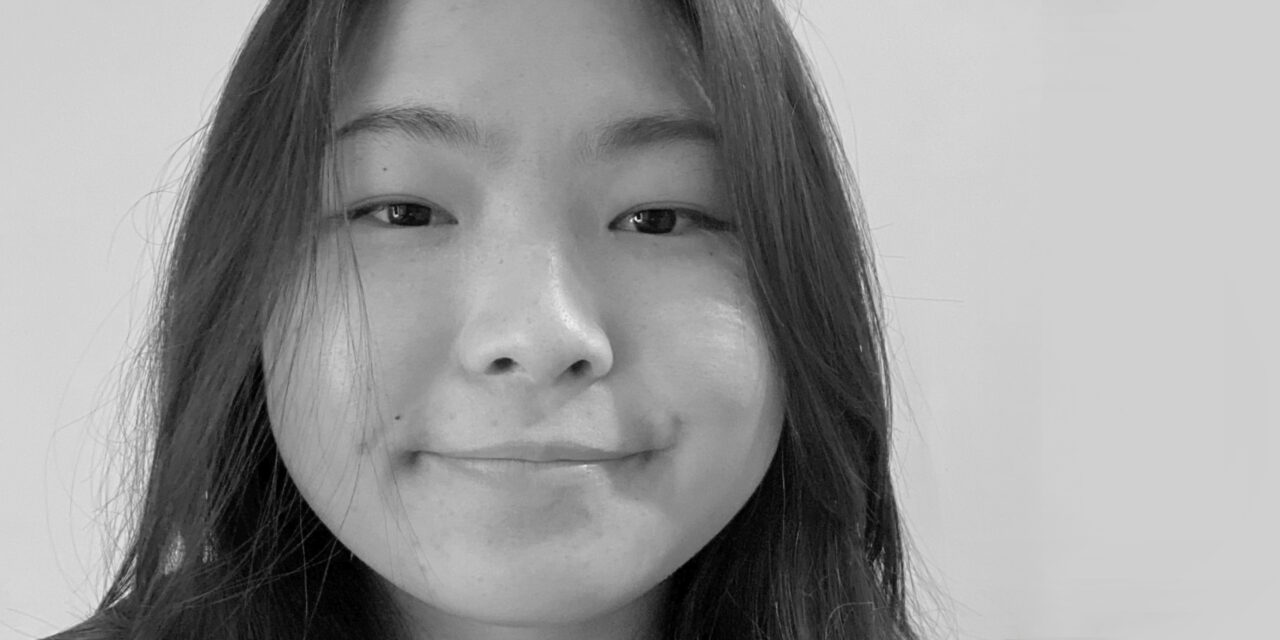
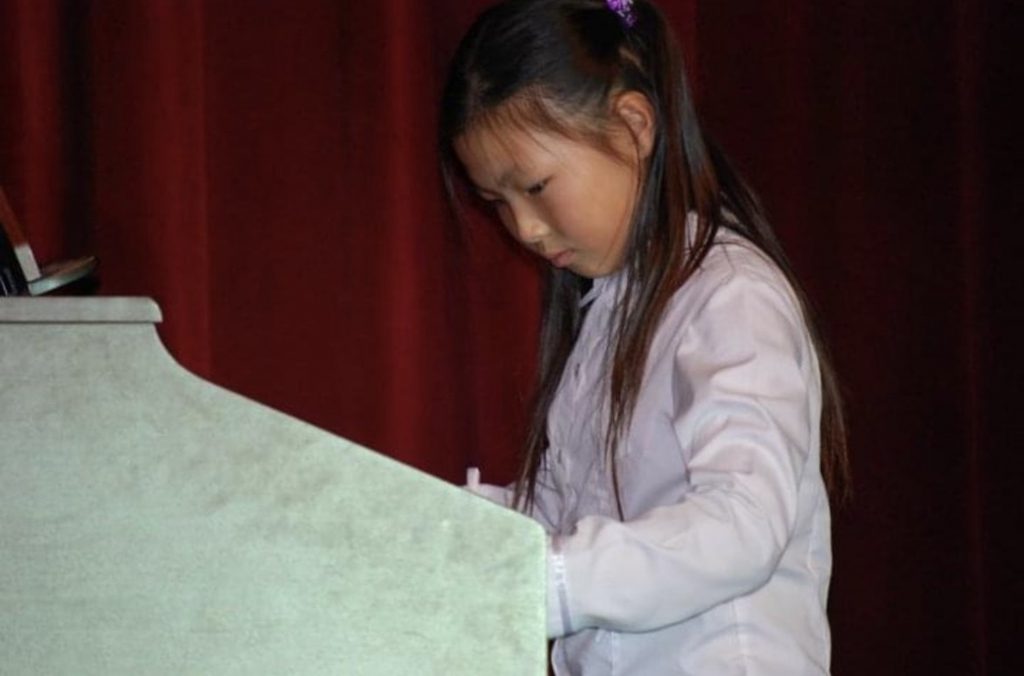
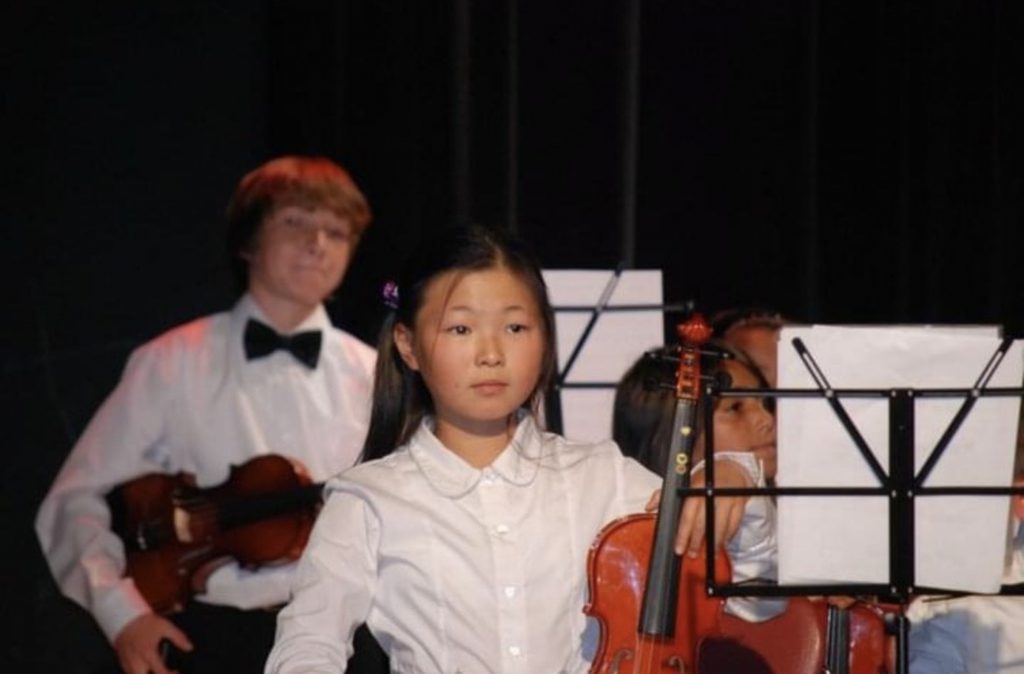


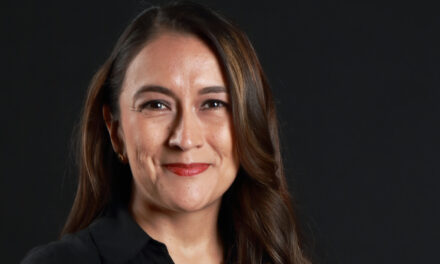

Recent Comments